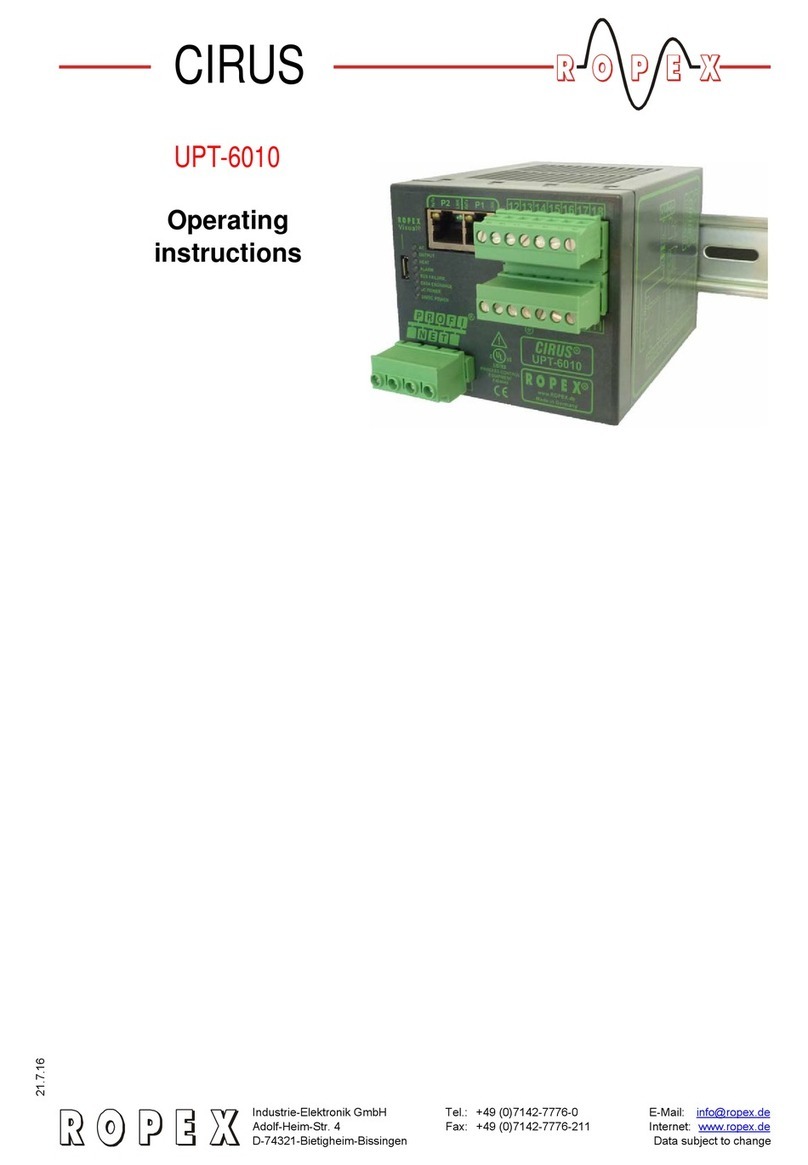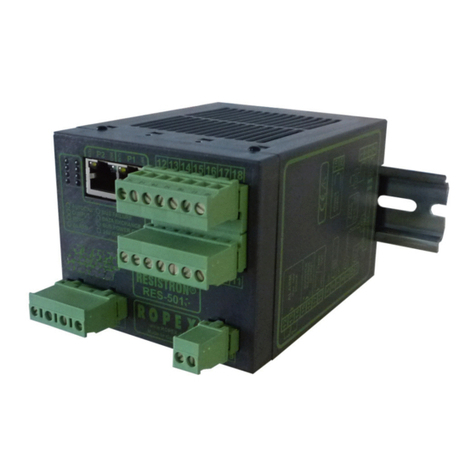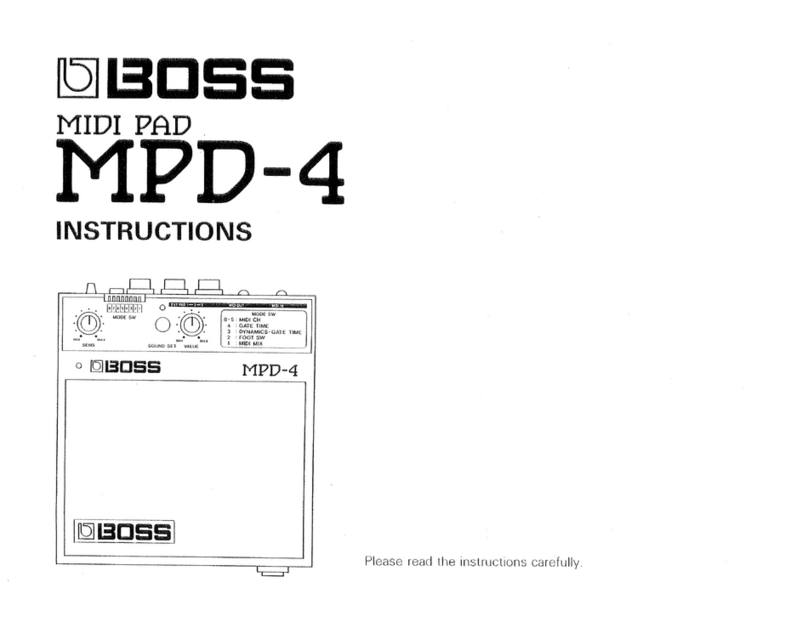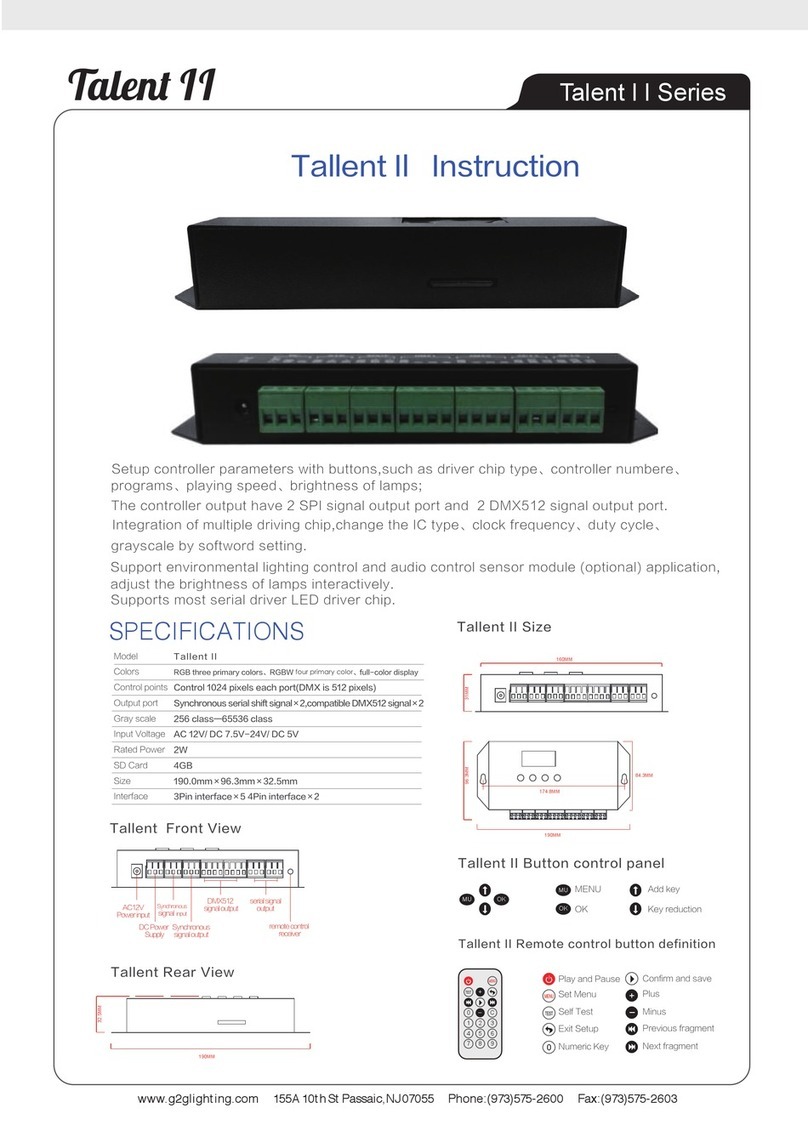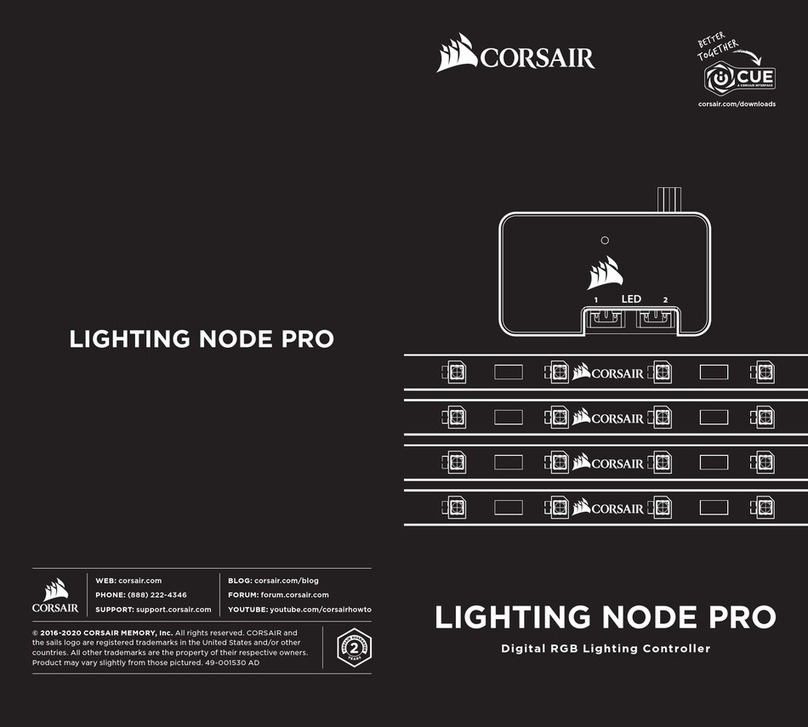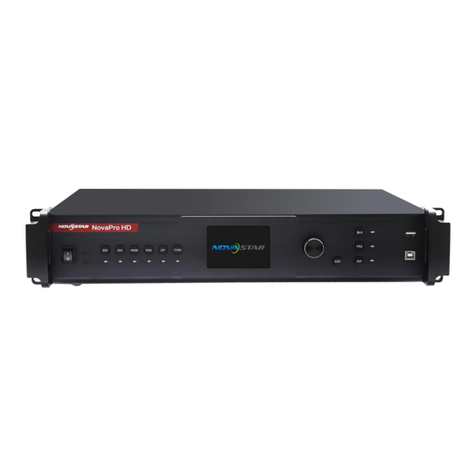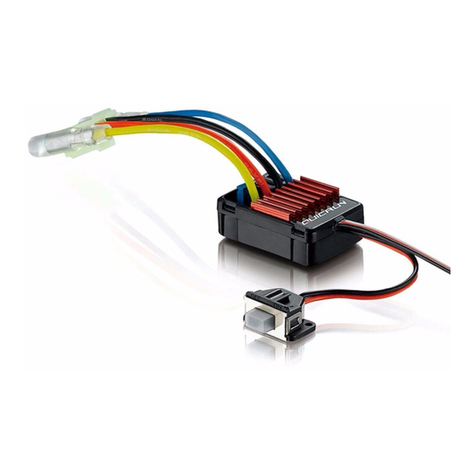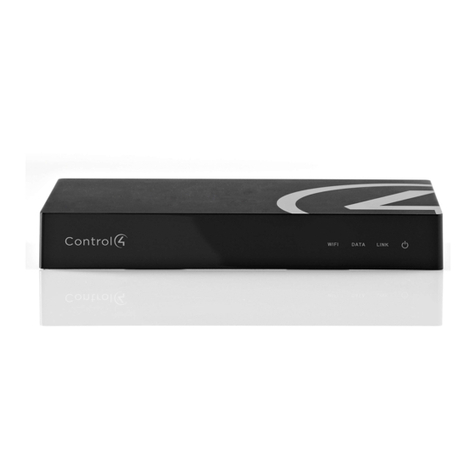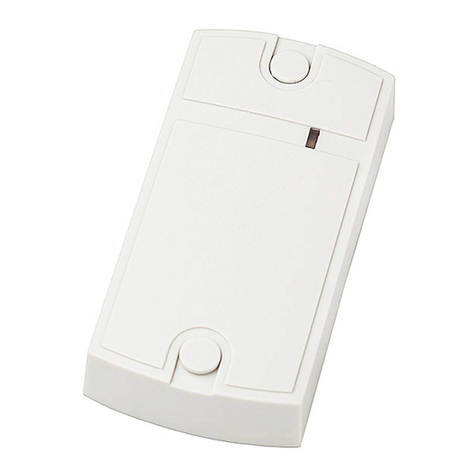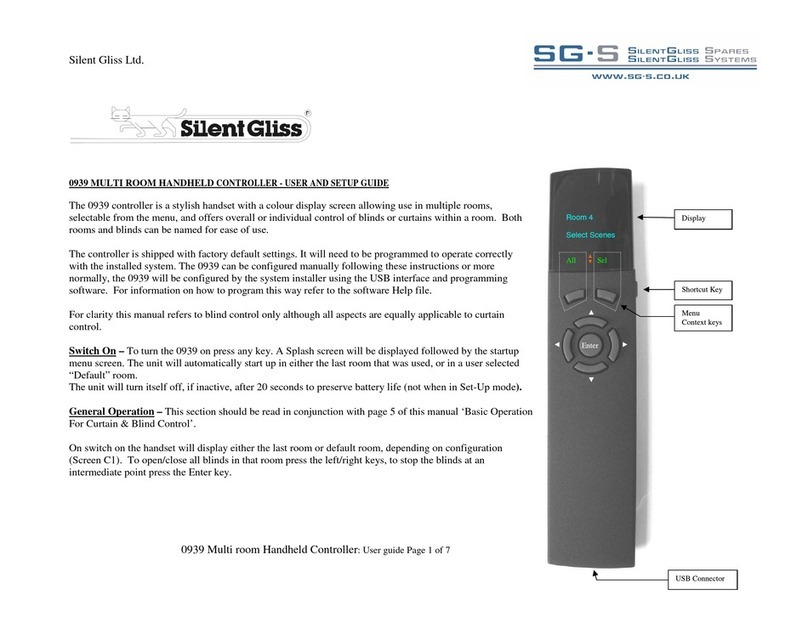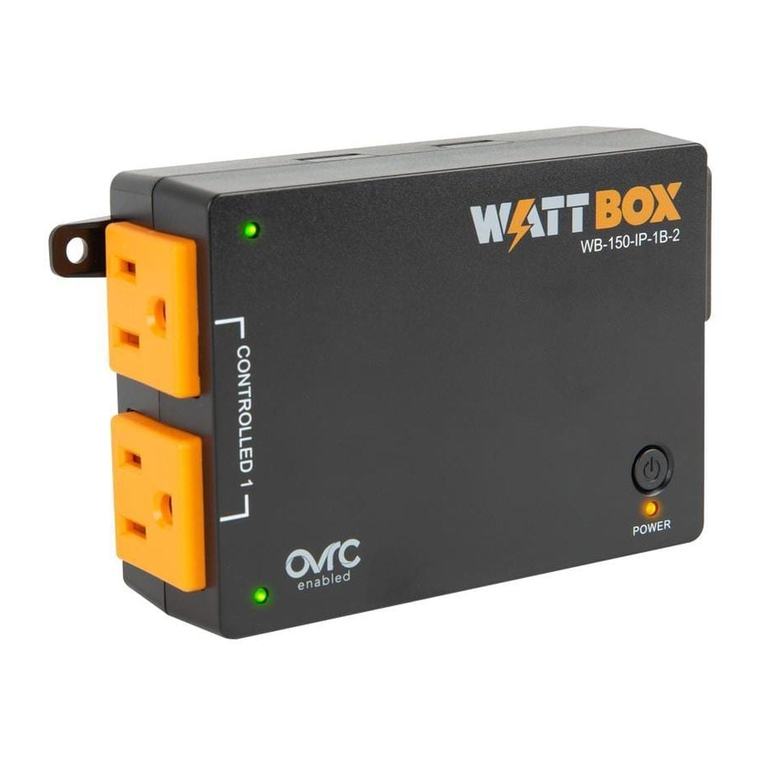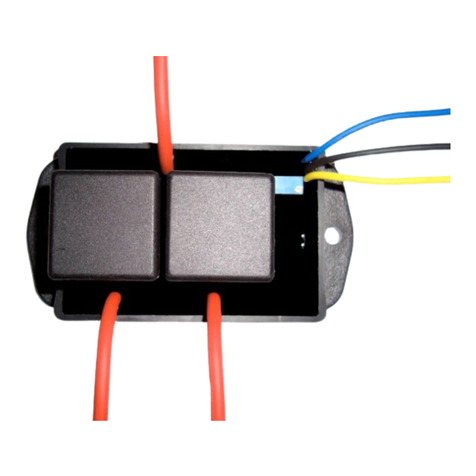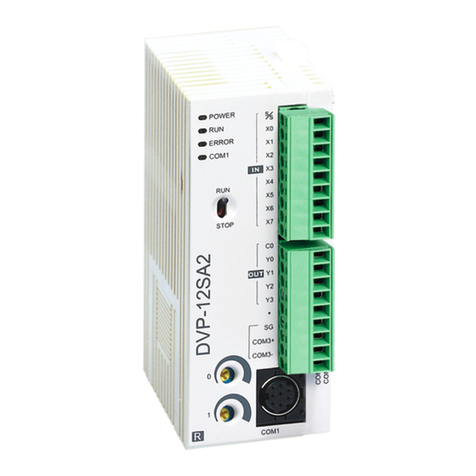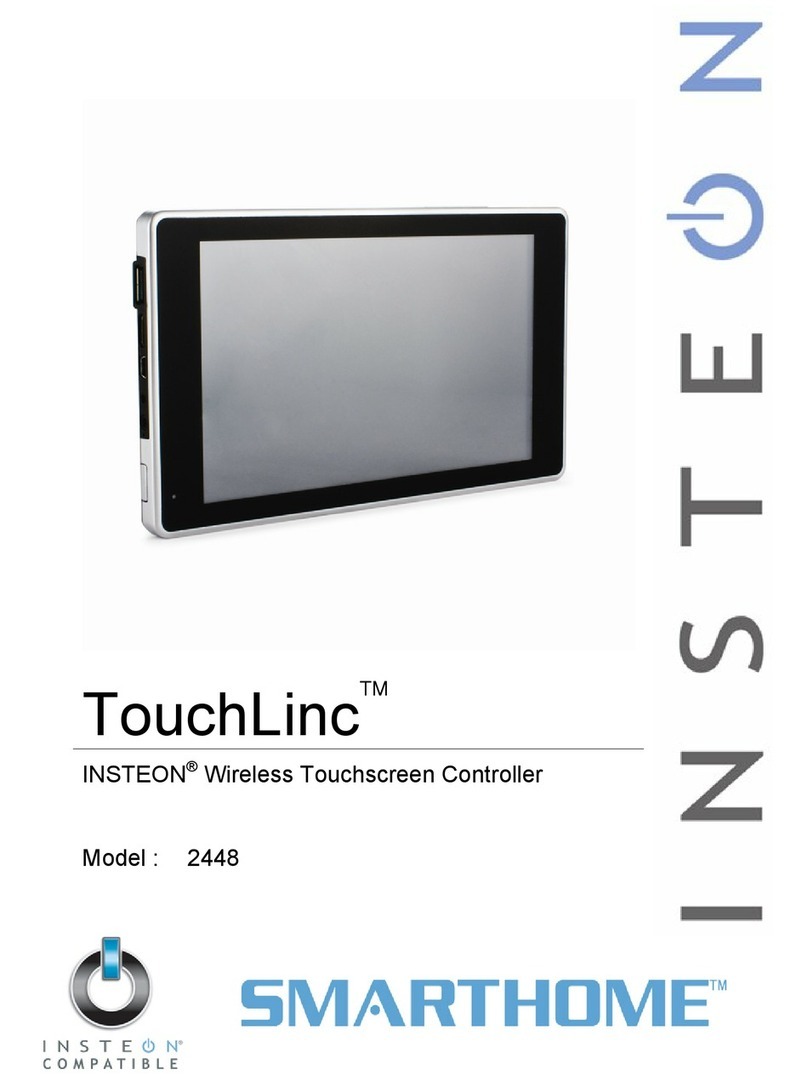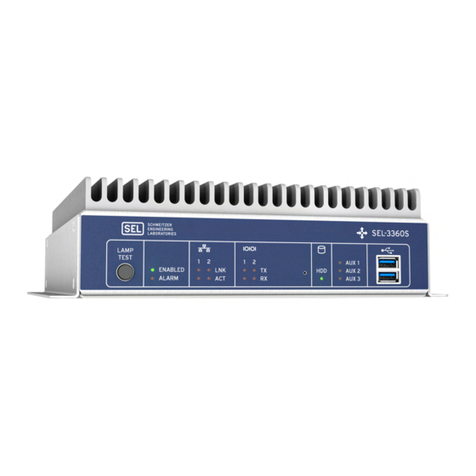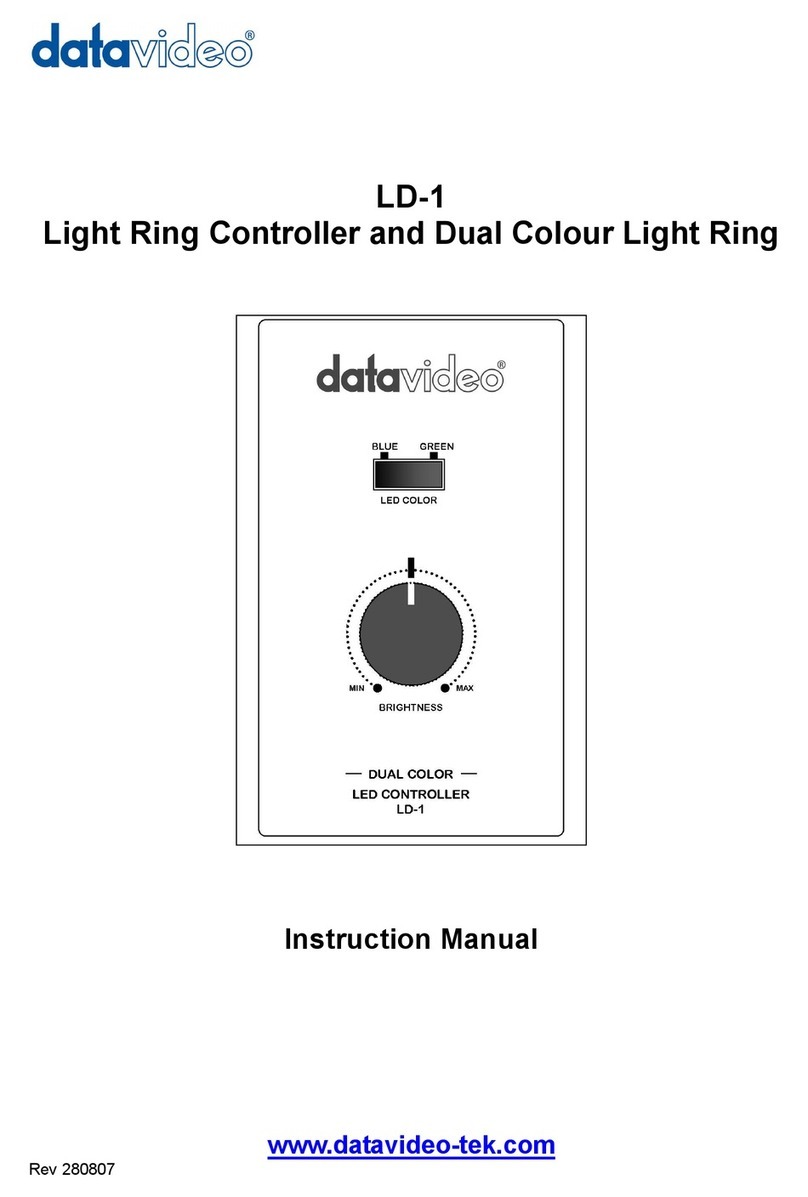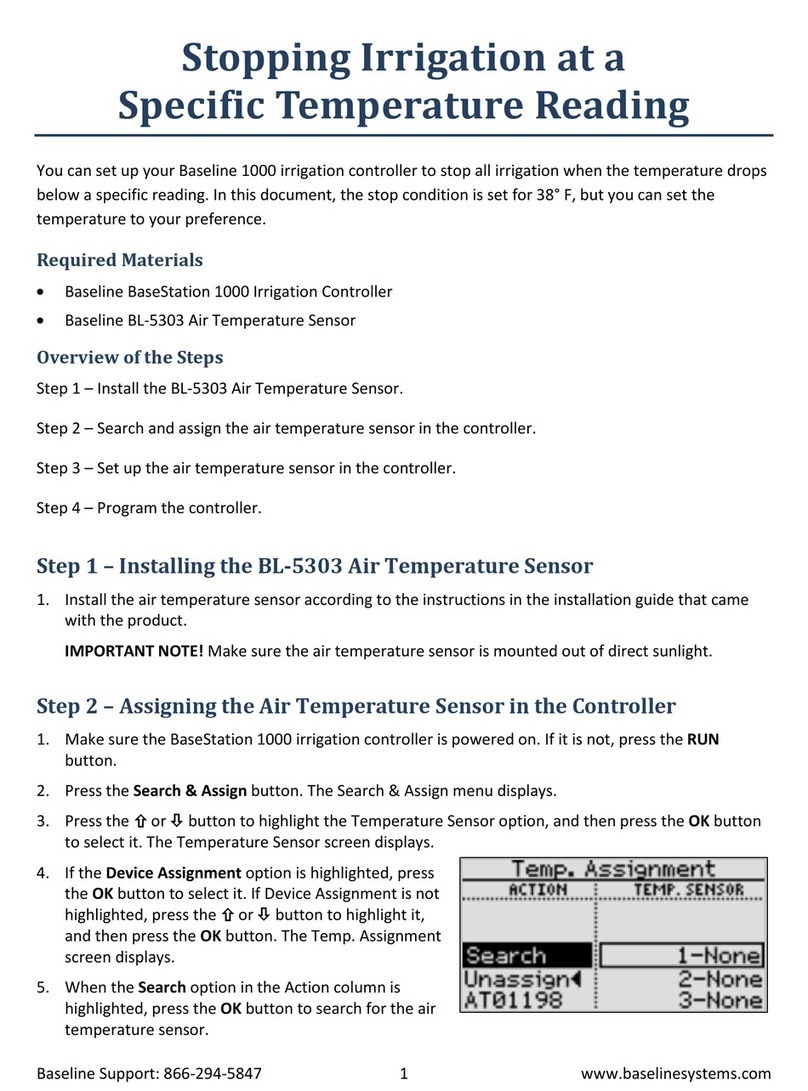Ropex RESISTRON RES-406 User manual

Gansäcker 21 Fax: +49/(0)7142/7776-19 Internet: www.ropex.de
D-74321-Bietigheim-Bissingen (Germany) Data subject to change
22.6.09
RESISTRON
RES-406
GB
Important features
• Microprocessor technology
• Complete control via PROFIBUS-DP interface
• Automatic zero calibration (AUTOCAL)
• Automatic optimization (AUTOTUNE)
• Automatic configuration of the secondary voltage and current ranges
(AUTORANGE, as of February 2006)
• Automatic phase angle compensation (AUTOCOMP, as of February 2006)
• Automatic frequency adjustment
• Large current and voltage range
• Booster connection as standard
• 0…10VDC analog output for ACTUAL temperature
• Alarm function with fault diagnosis
• Heatsealing band alloy and temperature range selectable
Operating
instructions

Page 2 RES-406
Contents
1 Safety and warning notes . . . . . . . . . . . . . . 3
1.1 Use . . . . . . . . . . . . . . . . . . . . . . . . . . . 3
1.2 Heatsealing band . . . . . . . . . . . . . . . . 3
1.3 Impulse transformer . . . . . . . . . . . . . . 3
1.4 Current transformer PEX-W2/-W3 . . . . 3
1.5 Line filter . . . . . . . . . . . . . . . . . . . . . . . 4
1.6 Warranty provisions . . . . . . . . . . . . . . . 4
1.7 Standards / CE marking . . . . . . . . . . . 4
2 Application . . . . . . . . . . . . . . . . . . . . . . . . . . 4
3 Principle of operation . . . . . . . . . . . . . . . . . 5
4 Description of the controller . . . . . . . . . . . 6
5 Accessories and modifications . . . . . . . . . 6
5.1 Accessories . . . . . . . . . . . . . . . . . . . . . 6
5.2 Modifications (MODs) . . . . . . . . . . . . . 7
6 Technical data . . . . . . . . . . . . . . . . . . . . . . . 8
7 Dimensions . . . . . . . . . . . . . . . . . . . . . . . . 10
8 Installation . . . . . . . . . . . . . . . . . . . . . . . . . 10
8.1 Installation procedure . . . . . . . . . . . . 10
8.2 Installation steps . . . . . . . . . . . . . . . . 11
8.3 Power supply . . . . . . . . . . . . . . . . . . . 12
8.4 Line filter . . . . . . . . . . . . . . . . . . . . . . 13
8.5 Current transformer PEX-W3 . . . . . . 13
8.6 Wiring diagram (standard) . . . . . . . . . 14
8.7 Wiring diagram with booster
connection . . . . . . . . . . . . . . . . . . . . . 15
9 Startup and operation . . . . . . . . . . . . . . . . 16
9.1 View of the controller . . . . . . . . . . . . . 16
9.2 Controller configuration . . . . . . . . . . . 16
9.3 Replacing and "burning in" the
heatsealing band . . . . . . . . . . . . . . . . 18
9.4 Startup procedure . . . . . . . . . . . . . . . 19
10 Controller functions . . . . . . . . . . . . . . . . . 21
10.1 Indicators and controls . . . . . . . . . . . 21
10.2 PROFIBUS communication
„up to Jan. 2006“/“as of Feb. 2006“ . . 23
10.3 Device master file (GSD) . . . . . . . . . . 23
10.4 PROFIBUS protocol . . . . . . . . . . . . . 24
10.5 Input data . . . . . . . . . . . . . . . . . . . . . . 26
10.6 Output data . . . . . . . . . . . . . . . . . . . . 28
10.7 Parameter data . . . . . . . . . . . . . . . . . 30
10.8 DPV1 protocol extension
(as of GSD Version v2.0) . . . . . . . . . . 35
10.9 Temperature indication (actual value
output) . . . . . . . . . . . . . . . . . . . . . . . . 38
10.10 Booster connection . . . . . . . . . . . . . . 39
10.11 Diagnostic interface/visualization software
(as of February 2006) . . . . . . . . . . . . 39
10.12 System monitoring/alarm output . . . . 39
10.13 Error messages . . . . . . . . . . . . . . . . . 40
10.14 Fault areas and causes . . . . . . . . . . . 45
11 Factory settings . . . . . . . . . . . . . . . . . . . . . 46
12 Maintenance . . . . . . . . . . . . . . . . . . . . . . . . 47
13 How to order . . . . . . . . . . . . . . . . . . . . . . . . 48
14 Index . . . . . . . . . . . . . . . . . . . . . . . . . . . . . . 49

Safety and warning notes
RES-406 Page 3
1 Safety and warning notes
This RESISTRON temperature controller is
manufactured according to DIN EN 61010-1. In the
course of its manufacture it passed through quality
assurance, whereby it was subjected to extensive
inspections and tests.
It left the factory in perfect condition.
The recommendations and warning notes contained in
these operating instructions must be complied with, in
order to guarantee safe operation.
The device can be operated within the limits indicated
in the "Technical Data" without impairing its operational
safety. Installation and maintenance may only be
performed by technically trained, skilled persons who
are familiar with the associated risks and warranty
provisions.
1.1 Use
RESISTRON temperature controllers may only be used
for heating and temperature control of heatsealing
bands which are expressly suitable for them, and
providing the regulations, notes and warnings
contained in these instructions are complied with.
In case of non-compliance or use contrary to
the intended purpose, there is a risk that
safety will be impaired or that the heatsealing band,
electrical wiring, transformer etc. will overheat.
Ensuring such compliance is the personal
responsibility of the user.
1.2 Heatsealing band
A basic prerequisite for reliable and safe operation of
the system is the use of suitable heatsealing bands.
The resistance of the heatsealing band which
is used must have a positive minimum
temperature coefficient in order to guarantee
trouble-free operation of the RESISTRON
temperature controller.
The temperature coefficient must be specified as
follows:
e.g. Alloy-20: TCR = 1100 ppm/K
NOREX: TCR = 3500 ppm/K
The RESISTRON temperature controller must be set
and coded according to the temperature coefficient of
the heatsealing band.
The use of incorrect alloys with a too low
temperature coefficient and incorrect coding
of the RESISTRON temperature controller lead to
uncontrolled heating and ultimately to burn-out of
the heatsealing band!
The heatsealing bands that were originally supplied
must be identified by detail specification, part number
or some other means that will assure that replacement
bands are identical.
1.3 Impulse transformer
A suitable impulse transformer is necessary to ensure
that the control loop functions perfectly. This
transformer must be designed according to VDE 0570/
EN 61558 (isolating transformer with reinforced
insulation) and have a one section bobbin. When the
impulse transformer is installed, suitable shock
protection must be provided in accordance with the
national installation regulations for electrical
equipment. In addition, water, cleaning solutions and
conductive fluids must be prevented from seeping into
the transformer.
Incorrect installation of the impulse
transformer impairs electrical safety.
1.4 Current transformer PEX-W2/-W3
The current transformer supplied with the RESISTRON
temperature controller is an integral part of the control
system.
Only the original ROPEX PEX-W2 or PEX-W3
current transformer may be used. Other
transformers may cause the equipment to
malfunction.
The current transformer may only be operated if it is
connected to the RESISTRON temperature controller
correctly (see section 9, "Startup and operation"). The
relevant safety instructions contained in section 8.3,
"Power supply", must be obeyed. External monitoring
modules can be used in order to additionally increase
!
!
TCR 10 4–
10 K–
!
!
!

Application
Page 4 RES-406
operating safety. They are not included in the scope of
supply of the standard control system and are
described in a separate document.
1.5 Line filter
The use of an original ROPEX line filter is mandatory in
order to comply with the standards and provisions
mentioned in section 1.7 "Standards / CE marking" on
page 4. This device must be installed and connected
according to the instructions contained in section 8.3,
"Power supply" as well as the separate documentation
enclosed with the line filter.
1.6 Warranty provisions
The statutory provisions for warranties apply for a
period of 12 months following the delivery date.
All devices are tested and calibrated in the factory.
Devices that have been damaged due to faulty
connections, dropping, electrical overloading, natural
wear, incorrect or negligent handling, chemical
influences or mechanical overloading as well as
devices that have been modified, relabeled or
otherwise altered by the customer, for example in an
attempt to repair them or install additional components,
are excluded from the warranty.
Warranty claims must be examined in the factory and
approved by ROPEX.
1.7 Standards / CE marking
The controller described here complies with the
following standards, provisions and directives:
Compliance with these standards and provisions is only
guaranteed if original accessories and/or peripheral
components approved by ROPEX are used. If not, then
the equipment is operated on the user's own
responsibility.
The CE marking on the controller confirms that the
device itself complies with the above-mentioned
standards.
It does not imply, however, that the overall system also
fulfils these standards.
It is the responsibility of the machine manufacturer and
of the user to verify the completely installed, wired and
operationally ready system in the machine with regard
to its conformity with the safety provisions and the EMC
directive (see also section 8.3, "Power supply"). If
peripheral components (e.g. the transformer or the line
filter) from other manufacturers are used, no functional
guarantee can be provided by ROPEX.
2 Application
This RESISTRON temperature controller is an integral
part of the "Series 400", the outstanding feature of
which is its microprocessor technology. All
RESISTRON temperature controllers are used to
control the temperature of heating elements
(heatsealing bands, beaded bands, cutting wires,
heatsealing blades, solder elements etc.), as required
in a variety of heatsealing processes.
The controller is most commonly used for impulse-
heatsealing PE films in:
• Vertical and horizontal f/f/s machines
• Pouch, filling and sealing machines
• Film wrapping machines
• Pouch-making machines
• Group packaging machines
•etc.
DIN EN 61010-1
(VDE 0411-1)
Safety provisions for electrical
measuring, control and laboratory
devices (low voltage directive).
Overvoltage category III, pollution
severity 2, safety class II.
DIN EN 60204-1 Electrical equipment of machines
(machinery directive)
EN 50081-1 EMC interference emissions
according to EN 55011, group 1,
class B
EN 50082-2 EMC interference immunity:
ESDs, RF radiation, bursts, surges.

Principle of operation
RES-406 Page 5
The use of RESISTRON temperature controllers
results in:
• Repeatable quality of the heatseals under any
conditions
• Increased machine capacity
• Extended life of the heatsealing bands and teflon
coatings
• Simple operation and control of the sealing process
3 Principle of operation
The resistance of the heatsealing band, which is
temperature-sensitive, is monitored 50x per second
(60x at 60Hz) by measuring the current and voltage.
The temperature calculated with the help of these
measurements is displayed and compared with the set
point.
The primary voltage of the impulse transformer is
adjusted by phase-angle control, if the measured
values deviate from the set point. The resulting change
in the current through the heatsealing band leads to a
change in the band temperature and thus also its
resistance. This change is measured and evaluated by
the RESISTRON temperature controller.
The control loop is closed: ACTUAL temperature = SET
temperature. Even minute thermal loads on the
heatsealing band are detected and can be corrected
quickly and precisely.
A highly high response thermo-electric control loop is
formed which is highly accurate because purely
electrical variables are measured at a high sampling
rate. A high secondary current can be controlled
because power is controlled on the primary side of the
transformer. This allows optimum adaptation to the
load and to the required dynamic range despite the
exceptionally compact dimensions of the controller.
PLEASE NOTE!
RESISTRON temperature controllers play a significant
role in enhancing the performance of modern
machines. However, the full benefit can only be
obtained from the advanced technology offered by this
control system if all the system components, in other
words the heatsealing band, the impulse transformer,
the wiring, the timing signals and the controller itself,
are carefully compatible and interrelated.
We will be pleased to
contribute our many
years of experience
towards optimizing your
heatsealing system.
R=f(T)
+
_
Set point
Start
Indicators
and
controls
or
bus interface
Actual value
LINE
RESISTRON controller
Heatsealing band R = f (T)
Current
transformer
Impulse transformer
UR
IR
prim.
U1
sec.
U2

Description of the controller
Page 6 RES-406
4 Description of the controller
The microprocessor technology endows the
RESISTRON temperature controller RES-406 with
previously unattainable capabilities:
• Very simple operation thanks to AUTOCAL, the
automatic zero calibration function.
• Good dynamic response of the control system
thanks to AUTOTUNE, which adapts automatically
to the controlled system.
• High precision thanks to further improved control
accuracy and linearization of the heatsealing band
characteristic.
• High flexibility: The AUTORANGE function (as of
February 2006) covers a secondary voltage range
from 0.4V to 120V and a current range from 30A to
500A.
• Automatic adjustment to the line frequency in the
range from 47Hz to 63Hz.
• Increased protection against dangerous conditions,
such as overheating of the heatsealing band.
The RESISTRON temperature controller RES-406 is
equipped with a PROFIBUS-DP interface. This
interface can be used to control all the controller
functions and interrogate controller information.
The ACTUAL temperature of the heatsealing band is
supplied to the PROFIBUS interface and to an analog
0 to 10V DC output. The real heatsealing band
temperature can thus be displayed on an external
temperature meter (e.g. ATR-x).
The RES-406 features an integrated fault diagnosis
function, which tests both the external system
(heatsealing band, wiring etc.) and the internal
electronics and outputs a selective error message in
case of a fault.
To increase operational safety and interference
immunity, all PROFIBUS signals are electrically
isolated from the controller and the heating circuit.
Either coding switches on the temperature controller
itself or the PROFIBUS interface can be used to adapt
to different heatsealing band alloys (Alloy-20, NOREX
etc.) and set to the required temperature range
(0…300°C, 0…500°C etc.).
The compact design of the RESISTRON temperature
controller RES-406 and the plug-in connections make
this controller easy to install.
5 Accessories and modifications
A wide range of compatible accessories and peripheral
devices are available for the RESISTRON temperature
controller RES-406. They allow it to be optimally
adapted to your specific heatsealing application and to
your plant's design and operating philosophy.
5.1 Accessories
The products described below are only a few of the
wide range of accessories available for RESISTRON
temperature controllers ("Accessories" leaflet).
Analog temperature meter ATR-x
For front panel mounting or mounting on a top hat rail (DIN TS35 rail).
Analog indication of the ACTUAL temperature of the heatsealing band in °C. The
meter damping of the unit is optimized for the abrupt temperature changes that occur
in impulse mode.
Digital temperature meter DTR-x
For front panel mounting or mounting on a top hat rail (DIN TS35 rail).
Digital indication of the ACTUAL temperature of the heatsealing band in °C, with
HOLD function.
Line filter LF-xx480
Essential in order to ensure CE conformity.
Optimized for the RESISTRON temperature controller.

Accessories and modifications
RES-406 Page 7
5.2 Modifications (MODs)
Owing to its universal design, the RESISTRON
temperature controller RES-406 is suitable for a very
wide range of heatsealing applications.
One modification (MOD) is available for the
RESISTRON temperature controller RES-406 for
implementing special applications.
MOD 01
Amplifier for low secondary voltages
(UR= 0.25…16VAC). This modification is necessary,
for example, for very short or low-resistance
heatsealing bands.
Impulse transformer ITR-x
Designed according to VDE 0570/EN 61558 with a one section bobbin.
Optimized for impulse operation with RESISTRON temperature controllers.
Specified according to the heatsealing application
(ROPEX Application Report).
Communication interface CI-USB-1
Interface for connecting a RESISTRON temperature controller with diagnostic inter-
face (DIAG) to the PC (USB port). Associated PC visualization software for dis-
playing setting and configuration data, and for recording SET and ACTUAL tempe-
ratures in real time.
Booster B-xxx400
External switching amplifier, necessary for high primary currents (continuous
current > 5A, pulsed current > 25A).
Monitoring current transformer
For detecting frame short-circuits on the heatsealing band.
Used as an alternative to the standard PEX-W2/-W3 current transformer.
Measurement cable UML-1
twisted measurement cable for the UR-voltage measurement.
Trailing cable, halogene und silicone free.

Technical data
Page 8 RES-406
6 Technical data
Type of construction Housing for installation in the electrical cabinet
Snaps onto a standard top hat rail (DIN TS35 rail, 35 mm) acc. to DIN EN 50022
Dimensions: 90 x 75mm; height: 135mm (incl. terminals)
Line voltage All controllers manufactured as of February 2006:
115VAC version: 110VAC -15%…120VAC +10% (equivalent to 94…132VAC)
230VAC version: 220VAC -15%…240VAC +10% (equivalent to 187…264VAC)
400VAC version: 380VAC -15%…415VAC +10% (equivalent to 323…456VAC)
All controllers manufactured as of January 2004 up to January 2006:
115VAC version: 115VAC -15%…120VAC +10% (equivalent to 98…132VAC)
230VAC version: 230VAC -15%…240VAC +10% (equivalent to 196…264VAC)
400VAC version: 400VAC -15%…415VAC +10% (equivalent to 340…456VAC)
All controllers manufactured up to December 2003:
115VAC, 230VAC or 400VAC, tolerance: +10% / -15%
depending on version selected (section 13 "How to order" on page 48)
Line frequency 47…63Hz, automatic adjustment to frequencies in this range
24VDC-Supply
voltage
Terminals 5+7 or
PROFIBUS plug,
pins 2+7
24VDC, Imax = 100mA
Tolerance: +10 / -10%
The 24VDC-Supply voltage can be fed either via terminals 5 and 7 or via the
PROFIBUS plug at pins 2 and 7.
PROFIBUS-DP
interface
Baud rates: 9.6kbaud; 19.2kbaud; 45.45kbaud; 93.75kbaud; 187.5kbaud;
500kbaud; 1.5Mbaud; 3Mbaud; 6Mbaud; 12Mbaud
Plug acc. to IEC 61158
Heatsealing band
type and temperature
range
All controllers manufactured as of February 2006:
The temperature range and temperature coefficient settings can also be specified
by means of the ROPEX visualization software (section 10.11 "Diagnostic
interface/visualization software (as of February 2006)" on page 39) in addition to
the rotary coding switch (see below):
Temperature range: 200°C, 300°C, 400°C or 500°C
Temperature coefficient: 400…4000ppm (variable setting range)
All controllers manufactured as of start of production:
Five different ranges can be set with the rotary coding switch or via the PROFIBUS
interface:
Temperature coefficient 1100ppm, 0…300°C (e.g. Alloy-20)
Temperature coefficient 780ppm, 0…300°C (e.g. Alloy L)
Temperature coefficient 1100ppm, 0…500°C (e.g. Alloy-20)
Temperature coefficient 780ppm, 0…500°C (e.g. Alloy L)
Temperature coefficient 3500ppm, 0…300°C (e.g. NOREX)
The settings for a temperature coefficient of 780ppm are only available on
controllers manufactured as of October 2003.

Technical data
RES-406 Page 9
Analog output
(actual value)
Terminals 17+18
0…10V DC, Imax = 5mA
Equivalent to 0…300°C or 0…500°C
Accuracy: ±1% add. 50mV
Alarm relay
Terminals 12, 13, 14
Umax = 50V (DC/AC), Imax = 0.2A, changeover contact, potential-free
Maximum load
(primary current of
impulse
transformer)
Imax = 5A (duty cycle = 100%)
Imax = 25A (duty cycle = 20%)
Power dissipation max. 20W
Ambient
temperature
+5…+45°C
Degree of protection IP20
Installation If several controllers are installed on one top hat
rail (DIN TS35 rail), a clearance of at least 20mm
should be allowed between them.
The moving clip required for fastening must be
facing down for mounting on a horizontal top hat
rail.
End holders to mechanical fix the controller must be fitted at both ends for
mounting on a vertical top hat rail.
Weight Approx. 0.7kg (incl. connector plug-in parts)
Housing material Plastic, polycarbonate, UL-90-V0
Connecting cables
Type / cross-sections
Rigid or flexible; 0.2…2.5mm² (AWG 24…12)
Plug-in connectors
If ferrules are used, they must be crimped in accordance
with DIN 46228 and IEC/EN 60947-1.
This is essential for proper electrical contact in the terminals.
!

Dimensions
Page 10 RES-406
7 Dimensions
8 Installation
See also section 1 "Safety and warning notes" on
page 3.
Installation and startup may only be
performed by technically trained, skilled
persons who are familiar with the associated risks
and warranty provisions.
8.1 Installation procedure
Proceed as follows to install the RESISTRON
temperature controller RES-406:
1. Switch off the line voltage and verify that the circuit
is de-energized.
2. The supply voltage specified on the nameplate of
the RESISTRON temperature controller must be
identical to the line voltage that is present in the
plant or machine. The line frequency is
automatically detected by the RESISTRON
temperature controller in the range from
47Hz...63Hz.
3. Install the RESISTRON temperature controller in
the electrical cabinet on a standard top hat rail (DIN
TS35 rail, according to DIN EN 50022). If several
controllers are installed on one top hat rail, the
minimum clearance specified in section 6 "Technical
data" on page 8 must be allowed between them.
4. Wire the system in accordance with the instructions
in section 8.3 "Power supply" on page 12,
section 8.6 "Wiring diagram (standard)" on page 14
and the ROPEX Application Report. The information
provided in section 8.2 "Installation steps" on
page 11 must also be heeded.
5. Connect the RESISTRON temperature controller to
the PROFIBUS master using a cable according to
IEC 61158.
Check the tightness of all the system
connections, including the terminals for the
impulse transformer windings.
6. Make sure that the wiring conforms to the relevant
national and international installation regulations.
75.0 90.0
113.0
135.0
!
!

Installation
RES-406 Page 11
8.2 Installation steps
Line
Impulse
transformer
Current transformer
PEX-W2/-W3
U (prim.)
1
Heatsealing band R= f (T)
U (sec.)
2
A
F
Controller
Temperature
meter
ATR-x
Digital
potentiometer
PD-x
Avoid long
cables
Heatseal element
with coppered ends
Use heatseal bands with
suitable temperature coefficient
20mm clearance if several
controllers installed on
one top hat rail
Note
polarity
No additional
resistance
in secondary
circuit
Dimension
transformer correctly
- Secondary voltage
- Power
- Duty cycle
Configure
DIP switches
correctly
Sufficient wire
cross-section
No
push-on
connectors
Twisted
Current measuring
wires IR
R
Connect U measuring
wires directly to
heatsealing band ends
Line filter
LF-xx480
Note
direction
of rotation
Note
number
of turns
(up to Jan. 2006)

Installation
Page 12 RES-406
8.3 Power supply
ROPEX
temperature
controller
UR
IR
R
PRIM.
U1
Kb
Ka
SEC.
U2
LINE
I
>
I
>
GND/
Earth
N (L2)
L1 (L1)
LINE
FILTER
ON
OFF
K1
3
3
3
1
Short wires
2
2
Line
115VAC, 230VAC, 400VAC
50/60Hz
Circuit breaker
Double-pole, C characteristic
(ROPEX Application Report)
Short-circuit protection only.
RESISTRON temperature controller not protected.
!
Relay Ka
For "HEAT ON - OFF" function (all-pole) or
"EMERGENCY STOP".
Line filter
The filter type and size must be determined according to
the load, the transformer and the machine wiring
(ROPEX Application Report).
Do not run the filter supply wires (line side) parallel
to the filter output wires (load side).
!
RESISTRON temperature controller belonging to the
4xx Series.
Relay Kb
Load break (all-pole), e.g. in combination with the alarm
output of the temperature controller.
When using a series resistor RV-....-1 the relay Kb
shall be installed.
!
Impulse Transformer
Designed according to VDE 0570/EN 61558 (isolating
transformer with reinforced insulation). Connect core to
ground.
Use transformers with a one section bobbin. The
power, duty cycle and voltage values must be
determined individually according to the application
(ROPEX Application Report and "Accessories" leaflet
for impulse transformers).
!
Wiring
The wire cross-sections depend on the application
(ROPEX Application Report).
Guide values:
Primary circuit: min. 1.5mm², max. 2.5mm²
Secondary circuit: min. 4.0mm², max. 25mm²
These wires must always be twisted (>20/m)
These wires must be twisted (>20/m) if several control
loops are laid together ("crosstalk").
Twisting (>20/m) is recommended to improve EMC.

Installation
RES-406 Page 13
8.4 Line filter
To comply with EMC directives – corresponding to
EN 50081-1 and EN 50082-2 – RESISTRON control
loops must be operated with line filters.
These filters damp the reaction of the phase-angle
control on the line and protect the controller against line
disturbances.
The use of a suitable line filter is part of the
standards conformity and a prerequisite of
the CE mark.
ROPEX line filters are specially optimized for use in
RESISTRON control loops. Providing that they are
installed and wired correctly, they guarantee
compliance with the EMC limit values.
You can find the exact specification of the line filter in
the ROPEX Application Report calculated for your
particular heatsealing application.
For more technical information: "Line filter"
documentation.
It is permissible to supply several
RESISTRON control loops with a single line
filter, providing the total current does not exceed
the maximum current of the filter.
The wiring instructions contained in section 8.3 "Power
supply" on page 12 must be observed.
8.5 Current transformer PEX-W3
The PEX-W3 current transformer supplied with the
RESISTRON temperature controller is an integral part
of the control system. The current transformer may only
be operated if it is connected to the temperature
controller correctly (section 8.3 "Power supply" on
page 12).
!
!
LINE
PE
Large cross-section
wire to ground
Large cross-section
wire to ground
Large frame contact surface
Do not lay parallel Mounting plate (galvanized)
max. 1m
ROPEX
temperature
controller
Snap-on for DIN-rail 35 x 7,5mm or 35 x 15mm (DIN EN 50022)
terminal
block
terminal
wires
14
60
24 75 14
23 28
26
39
12

Installation
Page 14 RES-406
8.6 Wiring diagram (standard)
RES-406
9
8
7
6
5
4
3
2
1
+24VDC
GND
NC
A
(+5V) VP
DGND
RTS
B
Shield
14
13
12
ALARM OUTPUT
max. 50V / 0,2A
6
7
PROFIBUS-PLUG
SUB-D / 9-POLE
POWER SUPPLY
(+24V pwr. supply) P24
(GND pwr. supply) M24
5
24V
IN 5V
OUT
PROFIBUS
controller
electrically
isolated
11
9
10
8
4
3
2
1
15
16
18
17
°C
ATR
_
+
ANALOG
OUTPUT
+0...10VDC
Ground
Must be grounded
externally to prevent
electrostatic
charging!
0V
(Internnal ground)
No external
grounding allowed!
0V
(Internnal ground)
No external
grounding allowed!
R
IR
UR
Current transformer
PEX-W2/-W3
twisted
Impulse
transformer
Heat-
sealing
band
LINE
Line filter LF-xx480
sec.
U2
prim.
U1
up to
production
date
January 2006

Installation
RES-406 Page 15
8.7 Wiring diagram with booster
connection
RES-406
9
8
7
6
5
4
3
2
1
14
13
12
ALARM OUTPUT
max. 50V / 0,2A
6
7
PROFIBUS-PLUG
SUB-D / 9-POLE
5
24V
IN 5V
OUT
PROFIBUS
controller
electrically
isolated
11
9
10
8
4
3
2
1
15
16
18
17
°C
ATR
_
+
ANALOG
OUTPUT
+0...10VDC
Ground
Must be grounded
externally to prevent
electrostatic
charging!
R
Current transformer
PEX-W2/-W3
twisted
Impulse
transformer
IR
UR
Heat-
sealing
band
LINE
Booster
NC
NC
24
IN OUT
13
Line filter LF-xx480
sec.
U2
prim.
U1
+24VDC
GND
NC
A
(+5V) VP
DGND
RTS
B
Shield
POWER SUPPLY
(+24V pwr. supply) P24
(GND pwr. supply) M24
0V
(Internnal ground)
No external
grounding allowed!
0V
(Internnal ground)
No external
grounding allowed!
up to
production
date
January 2006

Startup and operation
Page 16 RES-406
9 Startup and operation
9.1 View of the controller
9.2 Controller configuration
The controller must be switched off in order
to configure the coding switches and plug-in
jumpers.
9.2.1 Configuration of the DIP switches
for secondary voltage and current
Automatic configuration (AUTORANGE)
(as of February 2006)
The secondary voltage and current ranges are
automatically configured by the automatic calibration
function (AUTOCAL). The voltage is configured in the
range from 0.4VAC to 120VAC and the current in the
range from 30A to 500A. If the voltage and/or the
current is outside the permissible range, a detailed
error message appears on the controller (see
section 10.13 "Error messages" on page 40).
Configuration with coding switches
(up to January 2006)
Set the DIP switches for matching the secondary
voltage U2and the secondary current I2to the correct
position for your application.
You can find the exact configuration of the
DIP switches in the ROPEX Application
Report calculated for your particular application.
Terminals LEDs
Wiring diagram Nameplate
Coding switches and
PROFIBUS plug
plug-in jumpers
!
!

Startup and operation
RES-406 Page 17
If the secondary current I2is less than 30A, the
PEX-W2 or PEX-W3 current transformer must have
two turns (ROPEX Application Report).
9.2.2 Configuration of the rotary coding
switch for the temperature range
and alloy
The settings for a temperature coefficient of
780ppm (switch position 1 and 5) are only
available on controllers manufactured as of
October 2003.
The setting of the rotary coding switch for the
temperature range and alloy can be
overwritten with the parameter data (section 10.7
"Parameter data" on page 30).
If the switch is set to "9" (as of February 2006), more
temperature ranges and alloys can be selected by
means of the ROPEX visualization software (see
section 10.11 "Diagnostic interface/visualization
software (as of February 2006)" on page 39).
3
2
14
5
ON
OFF
1...10V
6...60V
20...120V
ON
OFF
OFF
OFF
ON
OFF
OFF
OFF
ON
30...100A
60...200A
120...400A
OFF
ON
ON
OFF
OFF
ON
DIP switch
DIP switch
12
U
2
I
2
345
3
2
145
4
3
ON
OFF
U (V)
2
1-10
SWITC
H
ON
Factory settings
2x
0
5
1
2
3
4
6
7
8
9
0
5
1
2
3
4
6
7
8
9
Switch
position
0
1
4
5
8
300°C
300°C
500°C
500°C
300°C
1100ppm/K
780ppm/K
1100ppm/K
780ppm/K
3500ppm/K
e.g. Alloy-20
e.g. Alloy L
e.g. Alloy-20
e.g. Alloy L
e.g. NOREX
Temp.
range
Temp.
coefficient
Band
alloy
0 = Factory settings
SWITCH POS.
1
0
4
5
8
9
TEMP. RANGE
300°C
300°C
500°C
500°C
300°C
PC CONFIGURATION
ALLOY
780ppm/K
1100ppm/K
(L)
(A20)
1100ppm/K (A20)
780ppm/K
3500ppm/K
(L)
(NOREX)
9 PC-CONFIGURATION
!
!

Startup and operation
Page 18 RES-406
9.2.3 Configuration of the rotary coding
switches for the station address
The station address of the RES-406 in the PROFIBUS
network can be set between 0 and 99 with these coding
switches. A new setting does not take effect until the
next time the controller is switched on.
9.2.4 Configuration of the alarm relay
If the jumper is not inserted, the alarm relay
is permanently energized when using a
controller up to production date January 2006. The
other functions of the controller (e.g. heating,
AUTOCAL etc.) are not impaired by this.
If the plug-jumper is not inserted when using a
controller as of production date February 2006 - or
if it is incorrectly inserted - an error message
appears when the controller is switched on
(section 10.13 "Error messages" on page 40).
If the "Alarm relay deenergized by alarm/PC
CONFIGURATION" position is selected (as of
February 2006), the behavior of the alarm output can
be configured in more detail by means of the ROPEX
visualization software (see section 10.11
"Diagnostic interface/visualization software (as of
February 2006)" on page 39).
9.3 Replacing and "burning in" the
heatsealing band
9.3.1 "Burning in" the heatsealing band
The heatsealing band is a key component in the control
loop, since it is both a heating element and a sensor.
The geometry of the heatsealing band is too complex to
be discussed at length here. We shall therefore only
refer to a few of the most important physical and
electrical properties:
The measuring principle applied for this system
necessitates a heatsealing band alloy with a suitable
temperature coefficient TCR. Too low a TCR leads to
oscillation or uncontrolled heating.
When heatsealing bands with a higher TCR are used,
the controller must be calibrated for this.
The first time the heatsealing band is heated to
approximately 200…250°C, the standard alloy
undergoes a once-only resistance change (burn-in
effect). The cold resistance of the heatsealing band is
reduced by approximately 2…3%. However, this at first
glance slight resistance change results in a zero point
error of 20…30°C. The zero point must therefore be
0
0
0
0
5
5
5
5
1
1
1
1
2
2
2
2
3
3
3
3
4
4
4
4
6
6
6
6
7
7
7
7
8
8
8
8
9
9
9
9
PROFIBUS
STATION ADDRESS
x 1
x 10
Station address im PROFIBUS network between
0 and 99.
01 = Factory setting
Top of housing
0
5
1
2
3
4
6
7
8
9
Alarm relay de-
energized by alarm/
PC-CONFIGURATION.
Alarm relay energized
by alarm.
(factory setting)
CONFIGURATION
ALARM OUTPUT
DE-ENERGIZED / PC
AT ALARM
ENERGIZED
!

Startup and operation
RES-406 Page 19
corrected after a few heating cycles, i.e. the AUTOCAL
function must be repeated.
The burn-in effect described here does not occur if the
heatsealing band has already been thermally
pretreated by the manufacturer.
An overheated or burned-out heatsealing
band must no longer be used because the
TCR has been altered irreversibly.
One very important design feature is the copper or
silver-plating of the heatsealing band ends. Cold ends
allow the temperature to be controlled accurately and
increase the life of the teflon coating and the
heatsealing band.
9.3.2 Replacing the heatsealing band
All power supply leads must be disconnected from the
RESISTRON temperature controller in order to replace
the heatsealing band.
The heatsealing band must be replaced in
accordance with the instructions provided by
the manufacturer.
Each time the heatsealing band is replaced, the zero
point must be calibrated with the AUTOCAL function
while the band is still cold, in order to compensate
production-related resistance tolerances. The burn-in
procedure described above should be performed for all
new heatsealing bands.
9.4 Startup procedure
Please also refer to section 1 "Safety and warning
notes" on page 3 and section 2 "Application" on
page 4.
Installation and startup may only be
performed by technically trained, skilled
persons who are familiar with the associated risks
and warranty provisions.
9.4.1 Initial startup
Prerequisites: The controller must be correctly installed
and connected (section 8 "Installation" on page 10).
Proceed as follows to start up the controller for the first
time:
1. Switch off the line voltage and verify that all circuits
are de-energized.
2. The supply voltage specified on the nameplate of
the controller must be identical to the line voltage
that is present in the plant or machine. The line
frequency is automatically detected by the
temperature controller in the range from 47…63Hz.
3. In the case of controllers manufactured up to
January 2006, the settings of the DIP switches on
the controller are indicated in the ROPEX
Application Report and depend on the heatsealing
band that is used.
The settings of the coding switches on the controller
depend on the required station address in the
PROFIBUS network (section 9.2 "Controller
configuration" on page 16).
4. Link the device master file into the PROFIBUS
master (section 10.3), select the required
communication module ("compact" or "extended"
protocol) and start the communication.
5. Make sure that the "ST" bit is not set.
6. Switch on the line voltage and the 24VDC auxiliary
supply (the order is arbitrary).
7. When the voltage is switched on, the yellow
"AUTOCAL" LED lights up for approximately
0.3seconds to indicate that the controller is being
powered up correctly. This LED blinks slowly (1Hz)
as long as no PROFIBUS communication is active.
It does not go out again until it detects an active
communication.
All controllers manufactured as of
February 2006:
If the red "ALARM" LED lights up for 0.3s in
addition to the yellow "AUTOCAL" LED when the
voltage is switched on, the configuration of this
controller has been changed in the visualization
software (section 10.11 "Diagnostic interface/
visualization software (as of February 2006)" on
page 39). In order to avoid malfunctions, please
check the controller configuration before
continuing the startup procedure.
8. The green "DATA EXCHANGE" LED lights up to
indicate an active PROFIBUS communication.
!
!
!
!

Startup and operation
Page 20 RES-406
9. One of the following states then appears:
Up to production date January 2006:
As of production date February 2006:
10.Activate the AUTOCAL function while the
heatsealing band is still cold by setting the "AC" bit
(AUTOCAL) in the PROFIBUS protocol
(section 10.4 "PROFIBUS protocol" on page 24).
The yellow "AUTOCAL" LED lights up for the
duration of the calibration process (approx.
10…15s). The "AA" bit (AUTOCAL active) is set in
addition and a voltage of app. 0V appears at the
actual value output (terminals 17+18). If an ATR-x is
connected, it indicates 0…3°C.
When the zero point has been calibrated, the
"AUTOCAL" LED goes out and a voltage of
0.66VDC (300°C range) or 0.4VDC (500°C range)
appears at the actual value output instead. If an
ATR-x is connected, it must be set to "Z".
If the zero point has not been calibrated
successfully, the "AL" bit (alarm active) is set and
the red "ALARM" LED blinks slowly (1Hz). In this
case the controller configuration is incorrect
(section 9.2 "Controller configuration" on page 16
and ROPEX Application Report). Repeat the
calibration after the controller has been configured
correctly.
11.When the zero point has been calibrated
successfully, specify a defined temperature by
means of the PROFIBUS protocol (set point) and
set the "ST" bit. The "RA" bit (controller active) is
then activated and the "HEAT" LED lights up. The
heating and control process can be observed at the
actual value output:
The controller is functioning correctly if the
temperature (which corresponds to the signal
change at the analog output or the actual value in
the PROFIBUS protocol) has a harmonious motion,
in other words it must not jump abruptly, fluctuate or
deviate temporarily in the wrong direction. This kind
of behavior would indicate that the URmeasuring
wire have been wired incorrectly.
If an error code is displayed, please proceed as
described in section 10.13 "Error messages" on
page 40.
12.Burn in the heatsealing band (section 9.3
"Replacing and "burning in" the heatsealing band"
on page 18) and repeat the AUTOCAL function.
9.4.2 Restart after replacing the
heatsealing band
To replace the heatsealing band, proceed as described
in section 9.3 "Replacing and "burning in" the
heatsealing band" on page 18.
Always use a heatsealing band with the
correct alloy, dimensions and copper-plating
in order to avoid malfunctions and overheating.
Continue with section 9.4 steps 5 to 12.
"ALARM"
LED
"OUTPUT"
LED ACTION
OFF Short pulses
every 1.2s
Go to 10
BLINKS fast
(4Hz)
OFF Go to 10
Lit
continuously
OFF Fault diagnosis
(section 10.13)
"ALARM"
LED
"OUTPUT"
LED ACTION
OFF Short pulses
every 1.2s
Go to 10
BLINKS fast
(4Hz)
OFF Go to 10
Lit
continuously
OFF Fault no. 901:
(Fault group: 7):
Supply voltage/
Sync-Signal mis-
sing
(section. 10.2)
Otherwise:
Fault diagnosis
(section. 10.13) The controller is now ready
!
Other manuals for RESISTRON RES-406
1
Table of contents
Other Ropex Controllers manuals

Ropex
Ropex RESISTRON RES-409 User manual
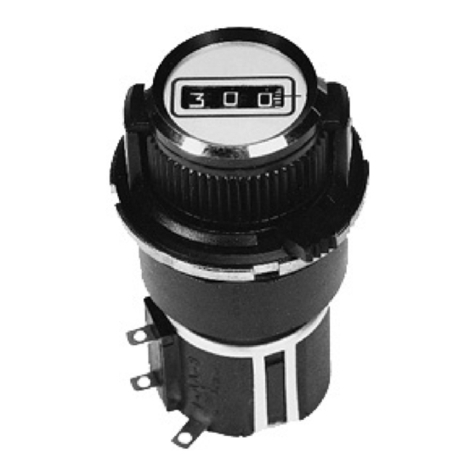
Ropex
Ropex RESISTRON PD-3 User manual

Ropex
Ropex Resistron RES-220 Quick start guide
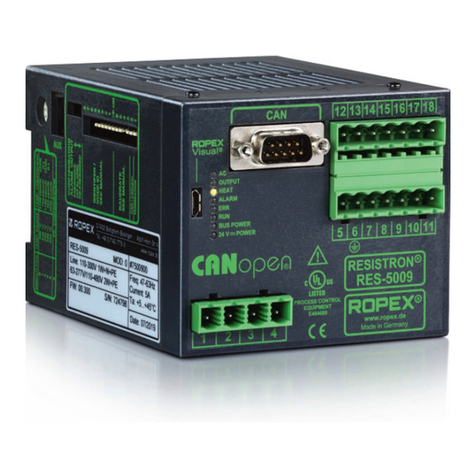
Ropex
Ropex RESISTRON RES-5009 User manual

Ropex
Ropex RESISTRON RES-5010 User manual
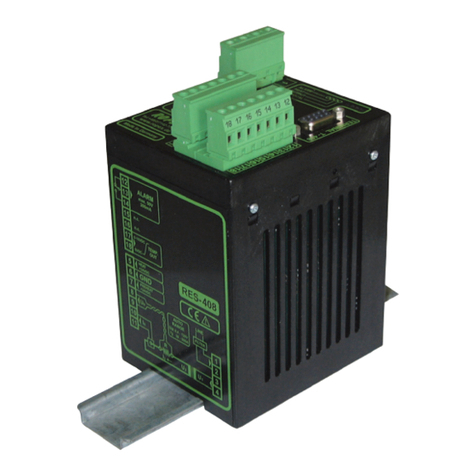
Ropex
Ropex RESISTRON RES-408 User manual
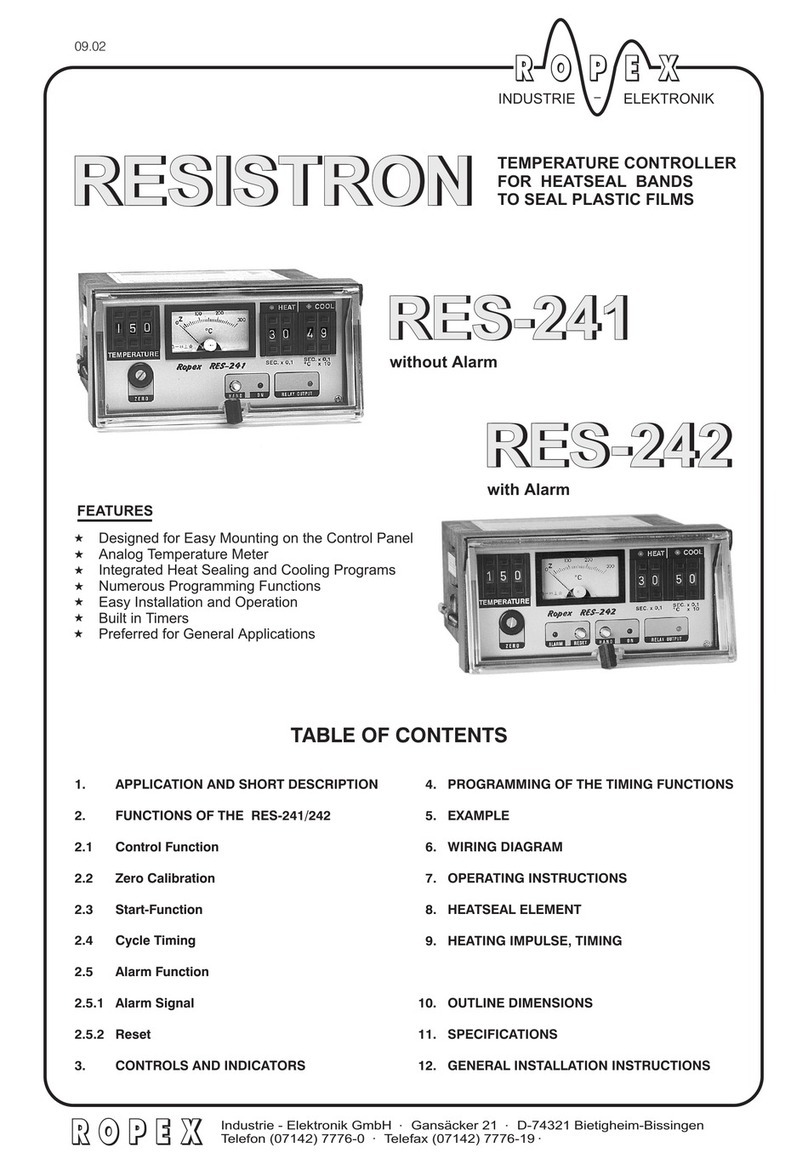
Ropex
Ropex Resistron RES-242 User manual
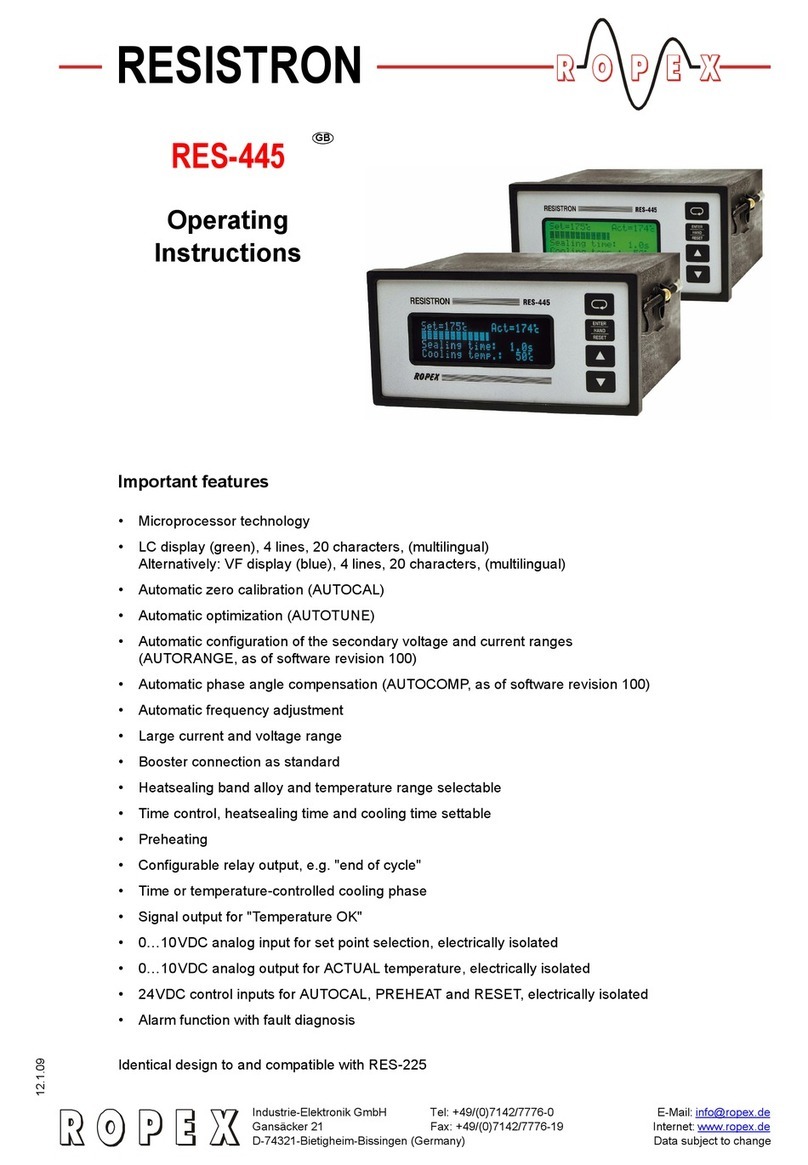
Ropex
Ropex RES-225 User manual
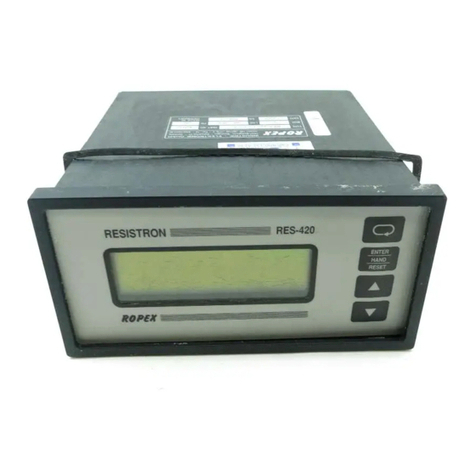
Ropex
Ropex RESISTRON RES-420 User manual
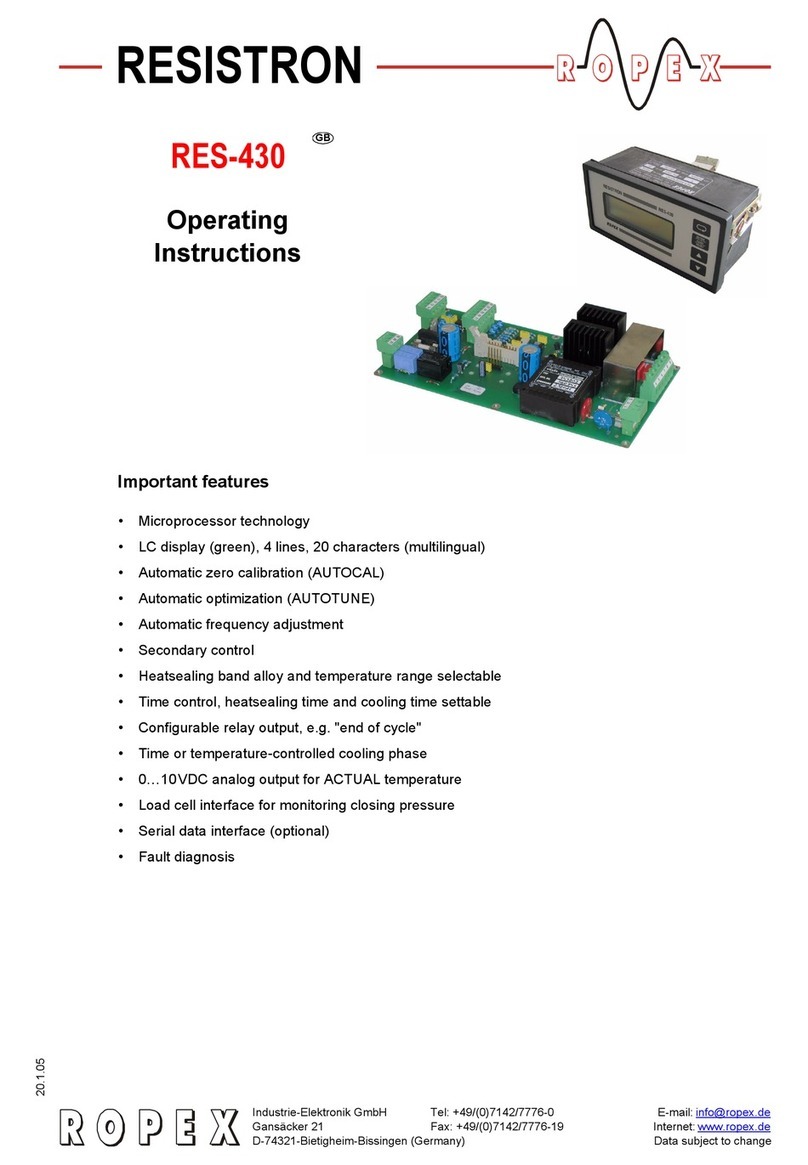
Ropex
Ropex Resistron RES-430 Series User manual
